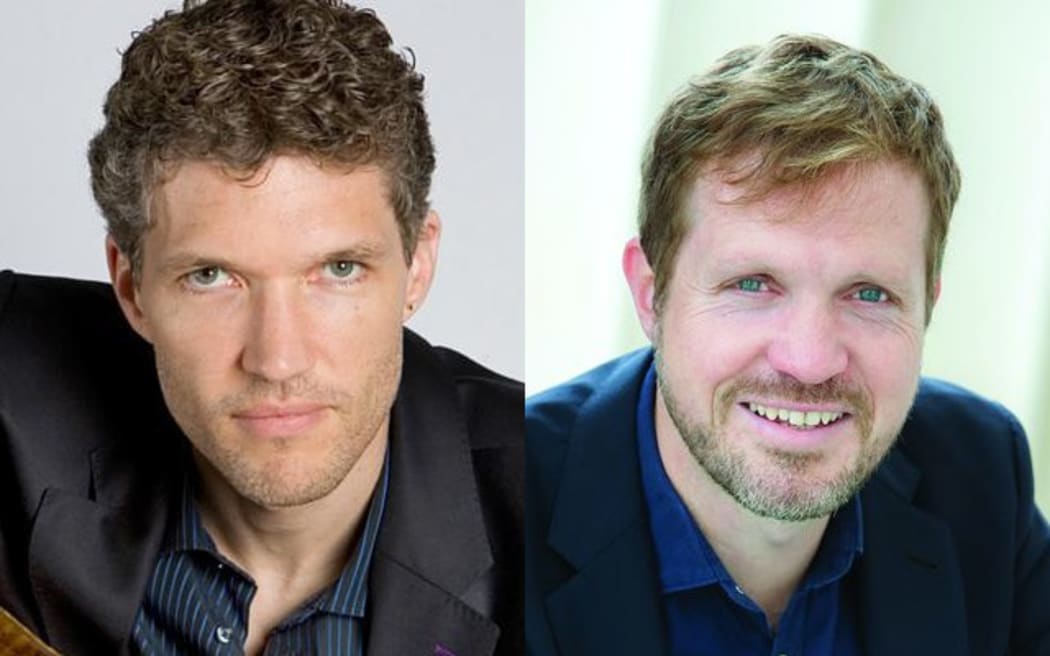
Matthew Barley, Stephen De Pledge Photo: supplied
"Monsieur Duport, you will make me believe in miracles, for I see that you can turn an ox into a nightingale."
Those words were allegedly uttered by Voltaire when he heard the playing of french cellist Jean-Louis Duport, who would also inspire a young Beethoven.
Voltaire wasn’t the only one to underestimate the cello. Here’s what Brahms had to say when hearing music by Dvorak:
"If I had known that it was possible to compose such a concerto for the cello, I would have tried it myself!"
In this concert presented by Chamber Music New Zealand, featuring British cellist Matthew Barley with Kiwi pianist Stephen De Pledge, the cello is certainly not underestimated.
Matthew Barley is a musician who enjoys and succeeds in exploring the boundaries of classical music. He’s well known as a keen improviser and regularly collaborates with living composers, jazz and indian musicians, and has a passion for combining music and technology. Joining him is frequent collaborator Stephen De Pledge, one of New Zealand’s premiere pianists. He’s equally at home as a musician in the core classical world and in new music, and frequently champions music by Kiwi composers.
In this concert titled 'Beethoven and Brahms', we get a feast of core repertoire including two major sonatas as well as a rich palate of music by Schumann, Boulanger, Rachmaninov and Shostakovich.
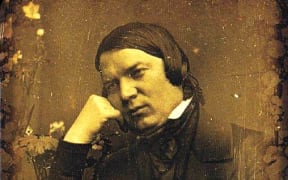
Robert Schumann, Daguerreotype portrait, 1849. Photo: Public Domain
Robert Schumann’s Adagio and Allegro was originally written for valve horn and piano but has found life arranged for a variety of other instruments. At the time of its composition in 1849, the valve horn was a very modern invention, freeing the brass instrument to become far more lyrical and virtuosic than ever before, and Schumann takes advantage of both characteristics. Matthew Barley and Stephen De Pledge present it here in a popular transcription for cello and piano.
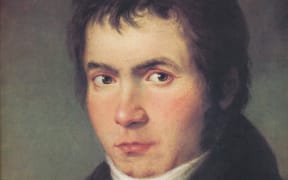
Portrait of Beethoven in 1804 Photo: Joseph Willibrord Mähler, Public Domain, Wikimedia Commons
Beethoven encountered the french cellist Jean-Louis Duport in Berlin after the man had fled the French Revolution in 1796. Duport’s playing, which impressed Voltaire into claiming he’d transformed an ox into a nightingale, left a similar impression on a young Beethoven. The German composed his first two cello sonatas for Duport and himself to perform at the Prussian court for Friedrich Wilhelm the second.
At the time, cello sonatas didn’t exist as such, and there’s no precedent for the first two by Beethoven. They were early works published as Opus 5, and very much an opportunity for the young composer to experiment and to showcase the talents of Jean-Louis Duport..
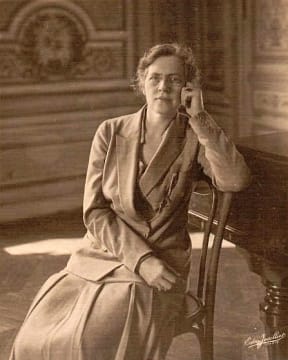
Nadia Boulanger Photo: public domain
Next, to a woman who had an enormous impact on composers of the twentieth century, and was the first woman to conduct many of the world’s major orchestras. Nadia Boulanger early on gave up composing her own music…she felt she had no strong talent as a composer, but what she did have was an incredible talent in teaching how to compose. She taught both in the US and England, from Julliard to the Royal School in Music, and influenced generations of composers, including Aaron Copland, Astor Piazzolla and Philip Glass. She also taught many famous musicians, from Daniel Barenboim to John Eliot Gardiner.
One of the few works we hear today by Nadia Boulanger is her three pieces for Cello and Piano. She herself had been a student of Gabriel Fauré, and these miniatures span the world of the late 19th century style and the music that was to come in the 20th century in Paris.
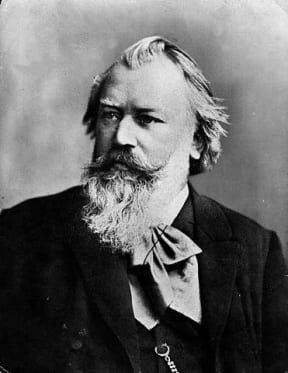
Johannes Brahms Photo: Public Domain
"If I had known that it was possible to compose such a concerto for the cello, I would have tried it myself!"
- Johannes Brahms
The irony is that Brahms studied the cello as a young man, and at this point had written two Sonatas for Cello, a Concerto for Violin and Cello, and a Trio for Clarinet, Cello and Piano, so he was absolutely not a stranger to the instrument. Brahms was also a fiendish perfectionist…it’s often said he destroyed more works than he published.
Whether or not that’s true, the two Cello Sonatas he left us are the greatest in the repertoire, and largely unmatched until the 20th century and those by Shostakovich.
The first cello sonata was begun just before his move to Vienna in 1862. This is the Brahms at the height of his compositional mastery…the one of the long beard and portly stomach. The sonata is set in E minor and begins with typical Brahmsian melancholy, but works its way into a kind of instrumental duel between the cello and piano with a density of writing he was famous for. He was also a master composer of the piano, and this work is an equal partnership between the instruments.
Lying at the core of this work is a deep homage to Bach.
In programme notes written by the American pianist Scott Fogelssohn says Bach’s The Art of the Fugue "hovers over this sonata like a guardian angel. Brahms takes Bach’s flexible theme and uses it throughout, and in the finale gives us a Fugue on Bach Art of the Fugue. But with Brahms, this is no intellectual exercise. Fogelssohn goes on to write: “Sometimes tumultuous, sometimes gentle…two warriors fighting side by side to vanquish an unseen foe.”
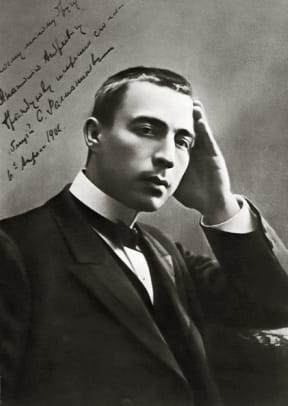
Rachmaninov in 1906 Photo: Public Domain
A vocalise is an exercise for singers, specifically used to practice smooth vocal lines, but the skill and the challenge translates to virtually all musical instruments. But for Rachmaninov, this Vocalise is more than an exercise. It comes from a song cycle, his Romances Opus 24 which he wrote for the soprano Antonina Nezhdanova in 1915. He told the soprano “What need is there of words, when you will be able to convey everything better and more expressively than anyone could with words…”
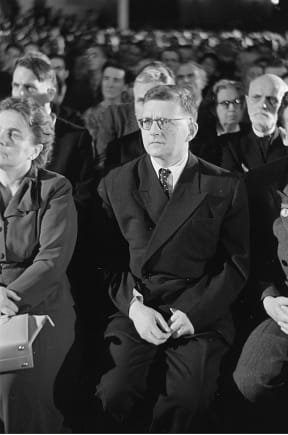
Dmitri Shostakovich in 1950 Photo: CC BY-SA 3.0
Barley and De Pledge follow that immediately with Barley’s arrangement of music from Shostakovich’s Suite from Cherymomushki. It comes from an operetta Shostakovich wrote in 1959, importantly after the death of Stalin, as a satire on the state of housing in the Moscow suburb where residents anticipate moving into a brand new high rise only to be thwarted by the bribes and schemes of officials. As you’ll hear, Shostakovich was the master of frenetic sarcasm in music, and Matthew Barley’s arrangement highlights his comedic skills on the cello.
As an encore, Matthew Barley and Stephen de Pledge performed the lullaby 'Nana' from Manual de Falla's 'Seven Popular Spanish Songs.
Recorded at the Public Trust Hall in Wellington, 15 August, 2022
David Houston producer/engineer

